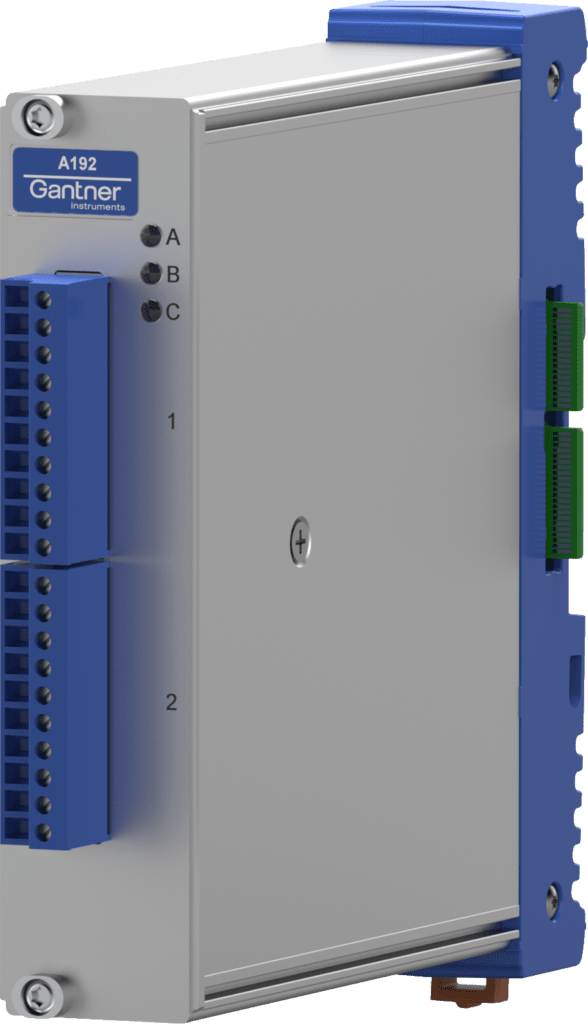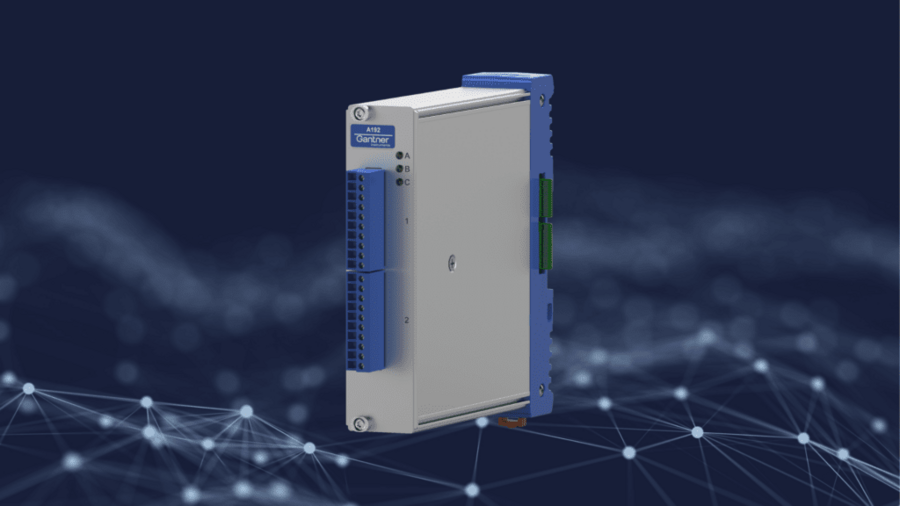The Q.series X A192 is the newest, most flexible, and capable I/O module in the Q.series X product line. The A192 has been designed with critical (aero)space testing applications in mind, for instance static fire test of rocket engines, structural health monitoring, fatigue validation, and iron bird testing. The module’s universal analog input can be configured for either voltage, current, resistance, RTD, thermocouple, strain gage or IEPE measurement. To allow for greatest flexibility in selecting the appropriate sensors for your test bench, the A192 provides fully programmable transducer excitation in combination with an adjustable input range and amplifier gain (automatic).
Like any of the Q.series X modules, various communication busses are supported; Ethernet, EtherCAT and LocalBus. In addition, the A192 includes an analog output to share the measurement signal with, for example, a control command system or redundant data logger. The two onboard digital I/O channels are freely configurable and can be used to communicate status to the test bench emergency system. TEDS can be added to simplify system setup, self-check or for sensor traceability. And not least of all, the module comes with three-way galvanic isolation up to 500 VDC. All this makes the A192 the most versatile measurement module available for your mission-critical ground test applications.

Key Features:
- Multipurpose I/O module with 1-Ch at 100 kS/s with programmable Sensor Excitation and Analog Output
- Voltage ranges ±10 V, ±5 V, ±1 V, ±100 mV, ±10 mV
- Current range ±25 mA
- IEPE/ICP with programmable sensor excitation (1 mA to 12 mA in steps of 10 µA)
- Thermocouple
- Pt100/Pt100
- Resistance
- Strain Gage (quarter, half, full) with programmable sensor excitation (1 V to 12 V in steps of 1 mV, continuous short circuit proof)
- 1 Analog output channel
±10 VDC or ±22 mA - 2 Digital Inputs or Outputs
- Status, trigger, tare, alarm
- Standard 10-pole or customized input sockets
Find out more about our products here:

More articles
Webinar – Essential Test & Measurement Technologies
Engineers face significantly complex challenges when deciding which future-proof, robust, and expandable data acquisition systems are best for their application(s). Thankfully three industry experts from Gantner Instruments will be presenting in a series of webinars hosted by our Canadian partner, Hoskin Scientific, to help make the DAQ selection process a little bit easier.
Read more...Putting Intelligent Heat Pump Control to the Test Real World Performance Evaluation
Given the increasing share of renewable energies in the electric energy system, flexibilities are key to match production and demand. Domestic heat pumps are expected and promoted to further increase as a key technology. Research is ongoing to utilize these heat pump systems and their thermal storage as flexibilities within the electrical energy system’s superordinate level.
Read more...EtherCAT performance combined with industry leading DAQ: 5 benefits you’re missing out on
We have compiled a list of the 5 most significant benefits of using an EtherCAT-based data acquisition system. If you’re not already familiar with EtherCAT, prepare to be enlightened. If you’re among the many engineers that use EtherCAT in your testing lab then you can consider this a confirmation of why you do what you do – and an excellent place to direct those who still think Industrial Ethernet is not suitable for high-performance testing applications.
Read more...Long term Volcano Monitoring – A field study
Monitoring volcano activity is an important issue in the mitigation of natural hazards. Recently, most fatal issues occurred on volcanoes with low-energy and moderate activity, making them attractive touristic places (e.g., the 2014 Mount Ontake eruption in Japan). For these types of volcanoes, monitoring involves multiphysics measurements on dense networks. Distributed networks of sensors must be easily adapted to the volcano’s evolving state and the appearance of new active areas like fumaroles or high heat flux in the soil.
Read more...